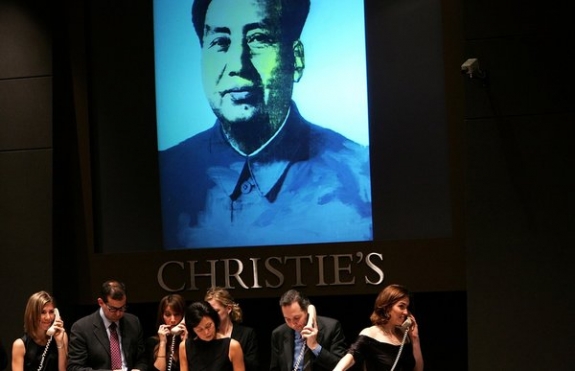As auction houses prepare for their fall sales, Chinese collectors are expected to be a major boost for the market, raising their paddles for big-ticket artworks despite a backdrop of global economic turmoil.
With China’s economy booming, art collectors there have become an increasingly powerful force in the market, demonstrating a growing interest in Western as well as Asian art.
At Sotheby’s spring sale, a Chinese buyer bought the evening’s priciest painting — Picasso’s “Femme Lisant (Deux Personnages)” — for $21.3 million. In March, at the auction house Lebarbe, in Toulouse, France, a Chinese buyer set a new French record for Chinese art with a $31 million bid on a scroll painting from the Imperial Palace in Beijing. Last year an anonymous telephone bidder who was believed to be Chinese paid $106.5 million for Picasso’s “Nude, Green Leaves and Bust” at Christie’s, a record for a work of art at auction.
Chinese auction houses are now selling works at a pace formerly associated with those in London and New York. One company that tracks the fine-art market, Artprice, reported that they were responsible for some $8.3 billion in sales, which would make them the world leader.
“We have seen exponential growth by mainland Chinese buyers who were brought up during the Cultural Revolution,” said Henry Howard-Sneyd, Sotheby’s vice chairman for Asian art. “These are successful business people with huge amounts of money at their disposal.”
The auction market is responding to the new demand. Last year Sotheby’s held its first exhibition for the private sale of art specifically for the Asian market. It featured Picassos, Monets and Chagalls that sold for $2 million to $25 million.
This year Christie’s appointed Chinese representatives in both New York and London to develop new clients in Asia and manage relations with Christie’s most important private collectors from mainland China and Asia.
“Chinese buyers are now recognized in the art world and auction world as the most important area of business development,” said Lawrence Chu, a collector based in Hong Kong who runs BlackPine Private Equity Partners.
The current Chinese influx is fueled by the sort of new wealth that has made the country home to the world’s largest number of billionaires, according to the Hurun Rich List 2010, China’s version of the Forbes 400. The number of Chinese billionaires is expected to increase 20 percent each year through 2014, according to Artprice.
To some extent, auction experts say, the Chinese regard art not only as a sound way to diversify their portfolios but also as a tested means to project status as they interact with international business executives — “the Arnaults and the Pinaults of the world,” said François Curiel, the president of Christie’s Asia, referring to the French billionaires Bernard Arnault and François Pinault.



